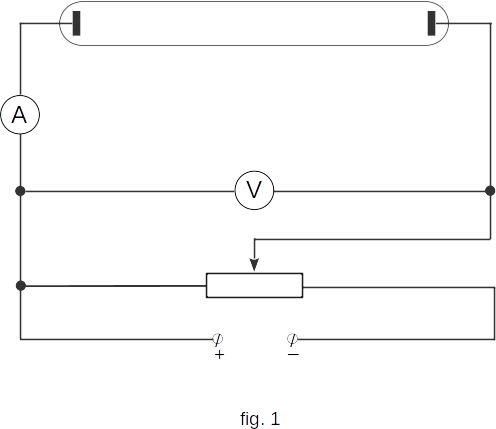From the Electrical current in different environments
111. Electric current in vacuum
In electron-beam tubes used in old TV sets, in radiolamps and in many other devices, electrons move in a vacuum. How are electron beams created in a vacuum? What properties do they have? What are the capabilities to control electron beams in a vacuum?
An independent gas discharge in a glass tube with two electrodes (fig. 1) can only occur if the gas pressure is not too low. At pressure reduction to values less than \(~ 0.0001 \,mm \,Hg\,\) the discharge stops, i.e. the electric current becomes equal to zero, though the voltage at the tube electrodes is different from zero.

This is due to the fact that the number of atoms becomes too small to maintain the electric current due to ionization by electronic shock and secondary emission from the cathode.
The lack of conductivity of the rarefied gas persists with further pressure reduction. Continuing to pump out the gas, it is possible to reach a concentration at which the molecules have time to fly from one wall of the tube to another, without ever having experienced collisions with each other. This state of gas in the tube is called a vacuum.
Conductivity of rarefied gas can be performed by an external ionizer (non-independent gas discharge, \(\S\)108). If there is so little gas that it is possible to speak about a vacuum condition, the conductivity of the interelectrode interval can be provided only by means of the source of the charged particles entered into a tube.
Most often, the action of such a source is based on the property of the bodies heated to a high temperature to emit electrons.
The phenomenon of thermoelectronic emission, which was already mentioned in \(\S\)108, has a wide range of practical applications. In most modern electronic vacuum devices, the source of charged particles is the heated cathode.